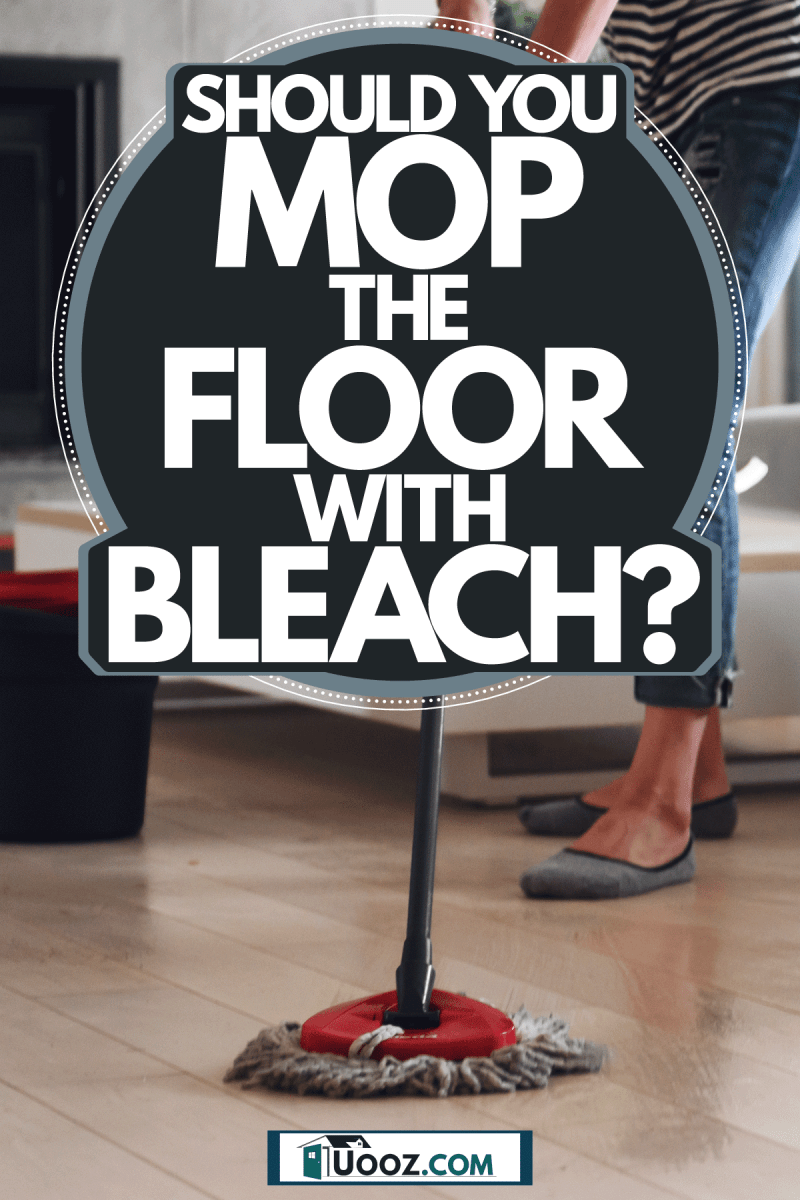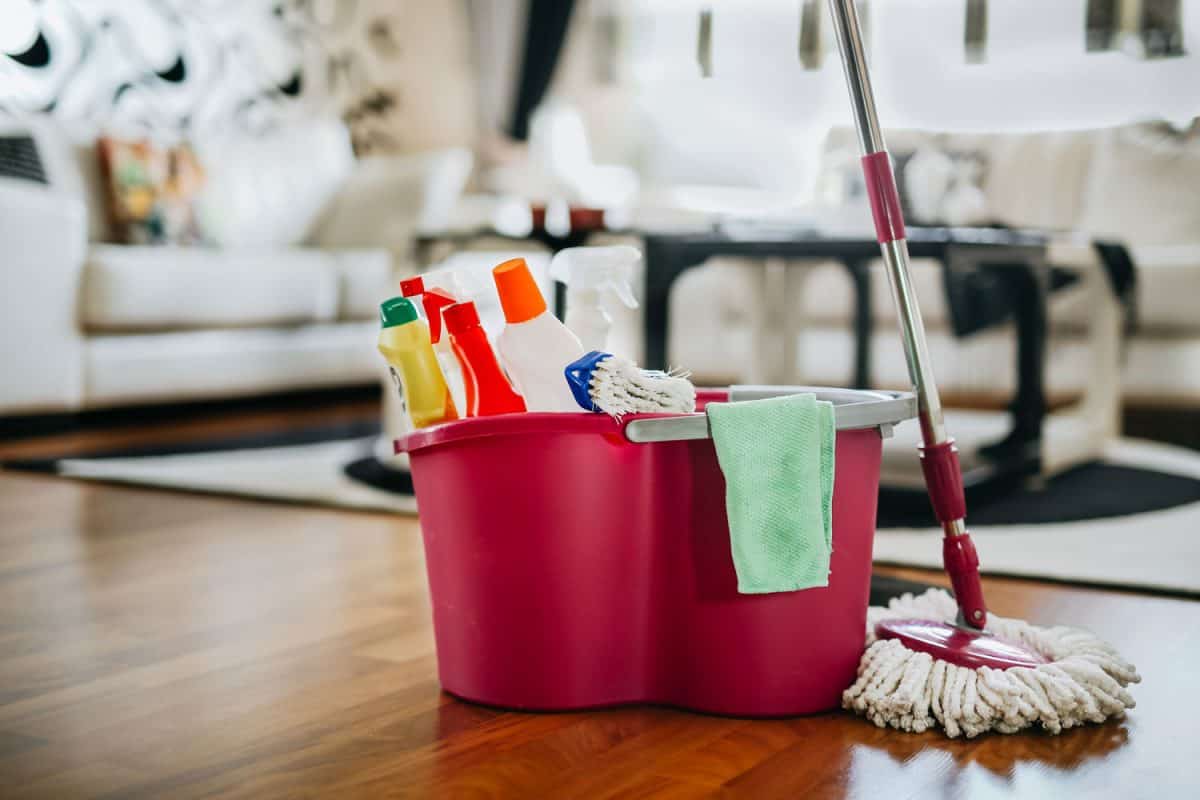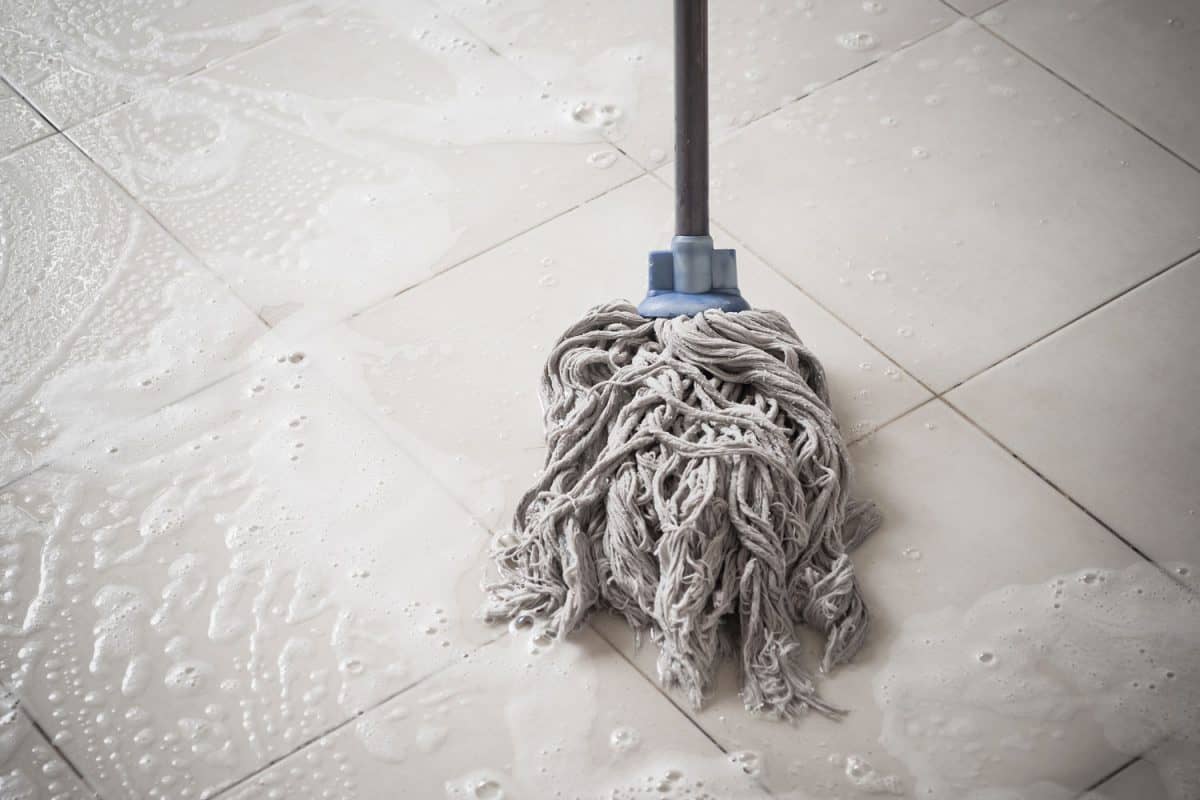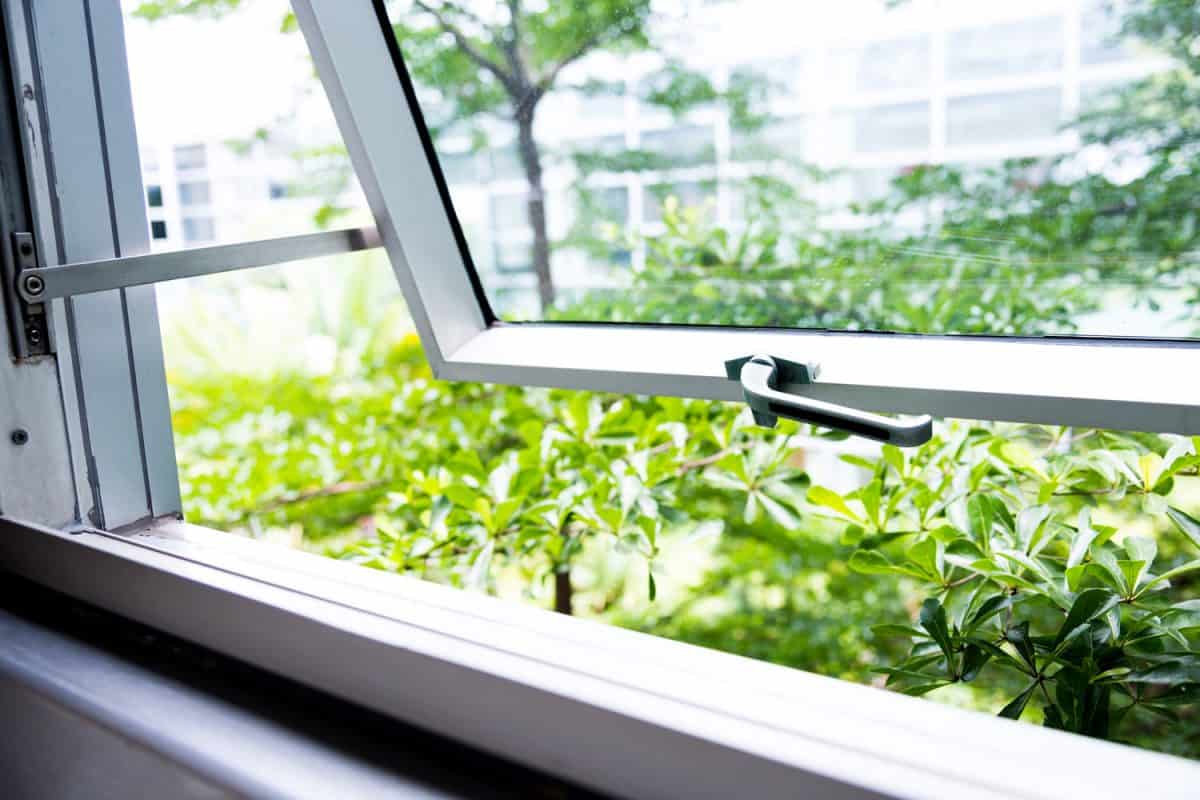If it's one tip each of our grandmas gave us, apart from good recipes, it is to use bleach as a cleaning agent. Few disinfectants come at par with working so efficiently yet not making the room smell of a sterile environment. So, can bleach’s efficiency be utilized in cleaning floors? Let's find out.
Mopping floors with bleach is a great idea as long as you don't have porous surfaces. Bleach is a credible disinfectant that readily targets all sorts of biofilms and allergens. With porous surfaces, however, the microbial presence is within the surface layers, making it inadequate to eliminate them.
Keep reading as we weigh the advantages and disadvantages affiliated with mopping floors with bleach. We also discuss how to use it effectively and what safety measures come in handy during the beach cleaning practice.

Is It Okay To Mop With Bleach?
Bleach is a microbe-resistant, antifungal disinfectant that can thoroughly banish biofilms from the surface. Since mopping is for sterilization, bleach makes for an ideal choice. Apart from wooden flooring, it is compatible with all other floors and requires minimum tools for handling.

Advantages of Mopping Floors With Bleach
It Has A High Antimicrobial Capacity
Bleach composition mainly consists of sodium hypochlorite, a highly antimicrobial compound. Several research studies have proven its resistive nature against biofilms. Thus, bleach is highly effective against germs. All it takes is a few drops to disinfect an area thoroughly. Beyond mopping floors, this is why bleach has applications within swimming pools and the prevention of water-borne diseases.
It Removes Mold And Allergens
Allergens, namely mold and mildew, tend to grow in places of moisture. Not only do they give off an unpleasant odor, but they are also liable to cause numerous health hazards. Bleach can eliminate the growth of mold over floors, countertops, tiles, etc.
Furthermore, studies have also found it effective against mold fragments left behind even after mold removal. They may attack your immune system just as violently as actual mold may. Substandard disinfection could thus lead you to inflammatory diseases, chest tightness, and even chronic health problems.
It Brightens Appearances
Try adding half a cup of bleach to a gallon of water and rigorously scrubbing the floor in one place. You will notice that the area exposed to the bleach appears brighter than the rest of the surface. This brightness is because bleach naturally enrichens color and removes all covering off the floor in the form of dust or microbes.
It Is Inexpensive
The University of Florida declared bleach as the cheapest and most common disinfectant. In the US, an average per-gallon price for bleach would be $3-$4. On the contrary, vinegar, a powerful cleaning and culinary agent, costs at least $10 per gallon. Additionally, bleach works only in solution form, requiring merely a few drops on each clean. It will last longer than most disinfectants.
Disadvantages of Mopping Floors With Bleach
It Doesn't Work On Porous Surfaces
If you have a wooden floor, bleach may be an unfavorable cleaning medium. Porous surfaces like wood allow allergens to penetrate deeper and grow beneath the top layer. Thus, the use of bleach will merely hamper the growth of the mold and not eliminate it.
It Must Not Interact With Chemicals
Bleach needs to be away at a safe distance from most other chemicals and home cleaners. Apart from water, any attempt to mix bleach with a solvent is going to be dangerous. From vinegar, ammonia, and even alcohol, chlorine gas production occurs when bleach comes in contact with these agents.
The United States National Poison Data System declared bleaches as the most frequent cause of poison reports. However, a closer case study revealed that almost all the cases included the mixing of bleach with other disinfectants.
Bleach Fumes Are Dangerous
Frequent inhalation of bleach fumes may lead to severe lung disorders, headaches, and loss of consciousness. Carry out all bleach cleanings in a ventilated space, preferably with windows open. Additionally, always wash the floor to rid it of the disinfectant after use. Since it can, at the least, irritate the throat and eyes, people with a medical history of asthma, bronchitis, or eye infections should avoid using this cleaning agent.
It Irritates The Skin
Cleaning with bleach is more often than not done by users themselves. Bleach exposure is liable to trigger irritation, itchiness, or even inflammation. One would question that since chlorinated swimming pools are safe, why not the bleach itself? Remember that its use in pools requires heavy dilution and the inclusion of several other pool chemicals.
How Do You Clean Floors With Bleach?
Follow these steps and guidelines to clean your floors with bleach:
- Since bleach will only disinfect your floor, you will have to clean it prior. Use water and a detergent of choice to clear off any debris on the floor. You could also use a broom to clear solid particles.
- Additionally, take trash cans, cushions, rugs, or any other floor furniture out of the way.
- There is no way you can use bleach directly on the floor and escape construction damage. Bleach is a caustic chemical that is highly prone to corrosion. Always dilute the bleach with water to practice safe cleaning.
- Depending upon the concentration of sodium hypochlorite, the dilution ratio for your bleach will vary. Generally, it is about 1 cup of bleach for every 5 gallons of water.
- Begin mopping the bleach solution all across the floor. Make two rounds or overlap each stroke to avoid leaving behind any germs.
How Long Does It Take For Bleach To Kill Germs?
Generally, a bleach solution should be allowed to rest on the floor for 5-10 minutes before rinsing. During this timeframe, it takes action on its antimicrobial capacity at its fullest and eliminates all germs found on the floor.
How Long Does Bleach Last On The Floor?
If not washed away, bleach will last about ten minutes to an hour, depending upon its concentration and floor type. During the period, it will gradually transform into fumes and escape into the air.
Do You Need To Rinse The Floor After Mopping With Bleach?

If you don’t rinse the bleach off the floor, it will accumulate in the air as toxic fumes. Moreover, fragments left behind on the floor may go on to wear down the surface. Therefore, it is essential to rinse the floor after mopping with bleach.
Once the bleach has disinfected the surface, empty the bucket of the solution. Wash it together with the mop and fill it with clean water. Now, do another round of mopping all across to eliminate any leftover bleach particles.
How Do You Feel Better After Cleaning With Bleach?

During the time you use bleach, you might inhale plenty of fumes from it. It may make you nauseous, give you a headache, and irritate your eyes/nose. Assuming you did your best to avoid inhaling as much as possible, some suggest going out for fresh air is the best remedy to feel better. If you don't want to go out, you should make sure that the areas you've cleaned are well-ventilated.
Of course, if you experience debilitating symptoms, you should seek medical attention. Inhaling too much bleach can damage the lungs and lead to worse causes down the line. Use a face mask and eye protection in the future to avoid inhaling too much chlorine.
Safety Tips For Mopping Floors With Bleach
- Make the use of gloves a habit when exposed to bleach products.
- Do not dilute bleach with hot water. It will result in chlorine gas and negate the safety effects of dilution.
- Store bleach in a cool, dark place away from heat lest it triggers a decomposition reaction.
- Never blend one or more household cleaners with bleach products.
- Do not let bleach reach vulnerable organs like eyes, mouth, or nostrils.
- Keep the rooms ventilated when using bleach for mopping.
- Know your products. You have to keep a close check on their ingredients, properties, and expiration dates.
- Keep bleach away from children and in a labeled container. Accidental ingestion could lead to severe stomach dysfunctions and other health problems.
Final Takeaway
Bleach is one of the strongest disinfectants on the market right now. It only makes sense to utilize its effectiveness to the fullest and use it for mopping. However, make sure you keep a good eye on its possible hazards.
Before you go, do you want to know more about mopping? How about if you should dry the floor after cleaning? To find out more, check out our post here.
Do you have a carpet and wonder if a floor steamer can clean one? We also have some answers for that! For more information, check out our post here. Until next time!
